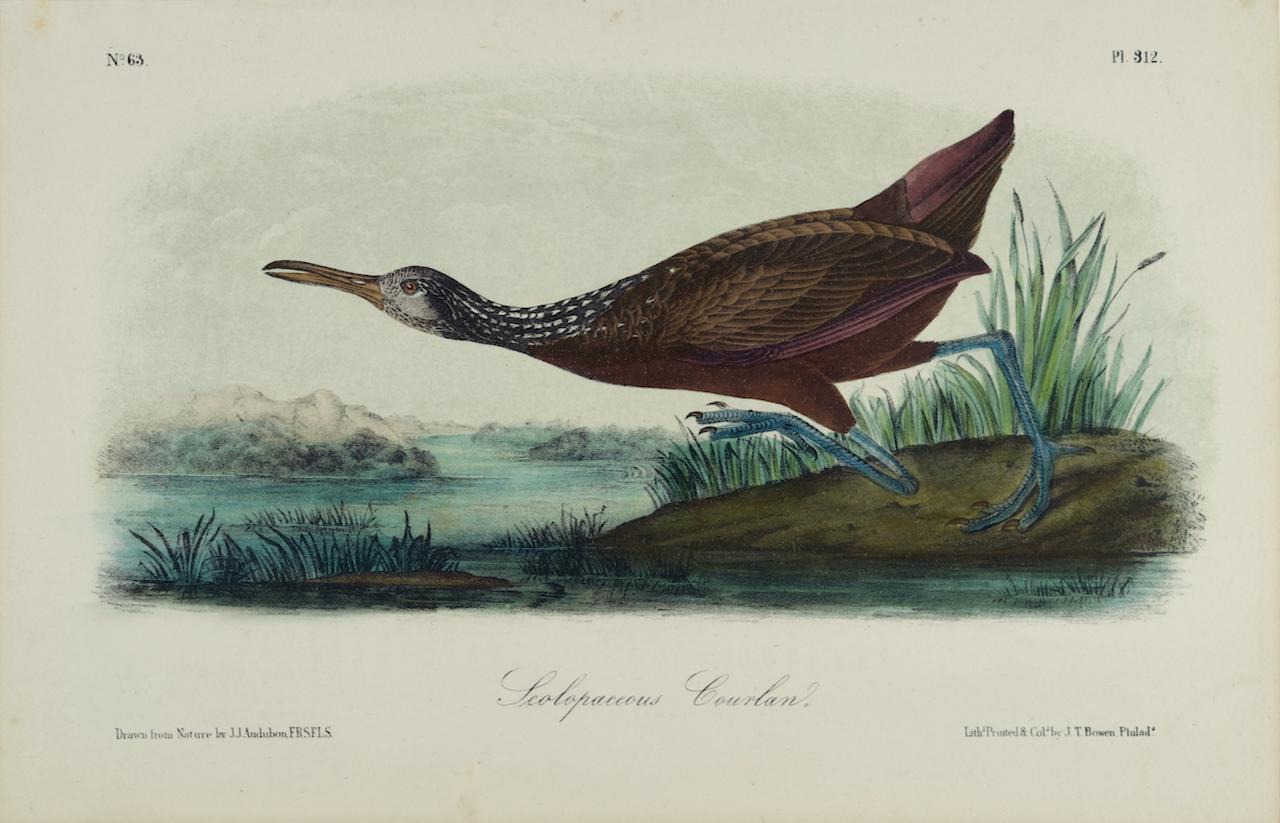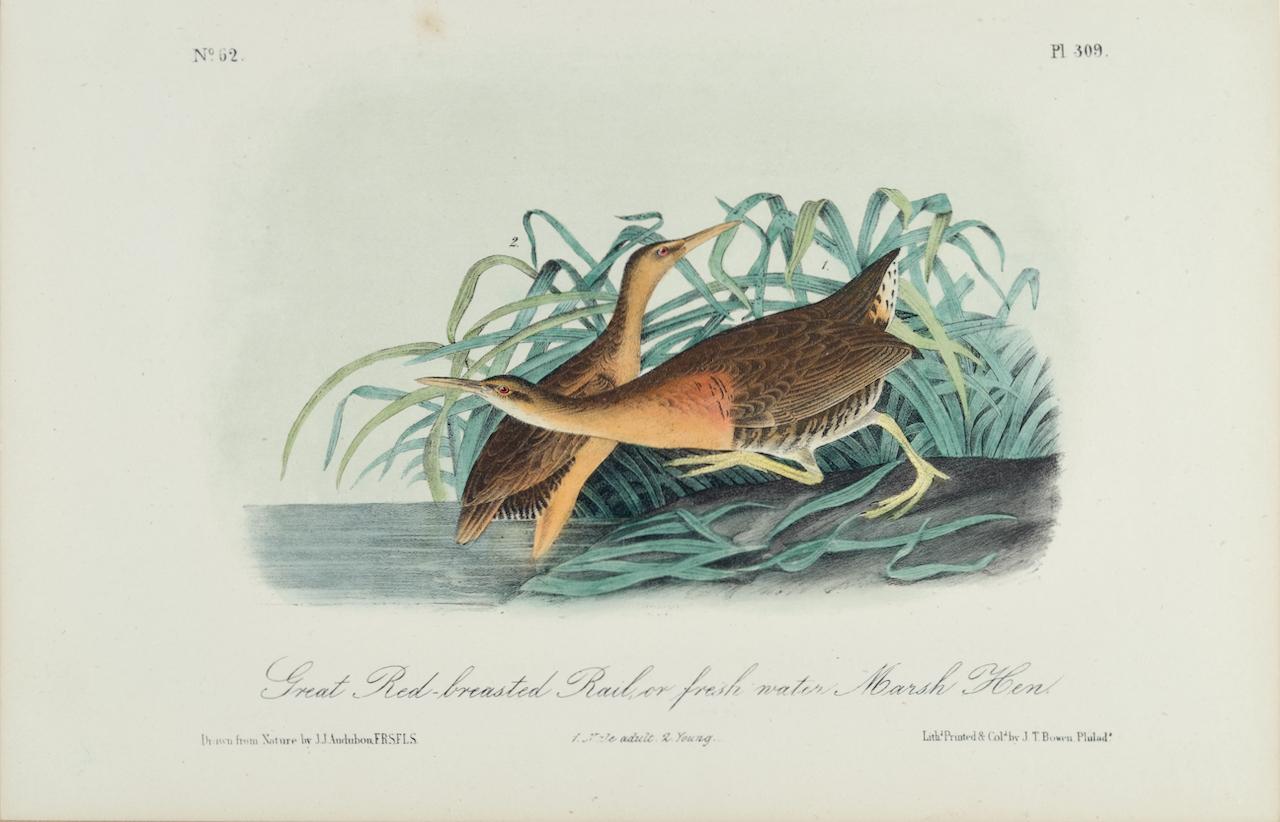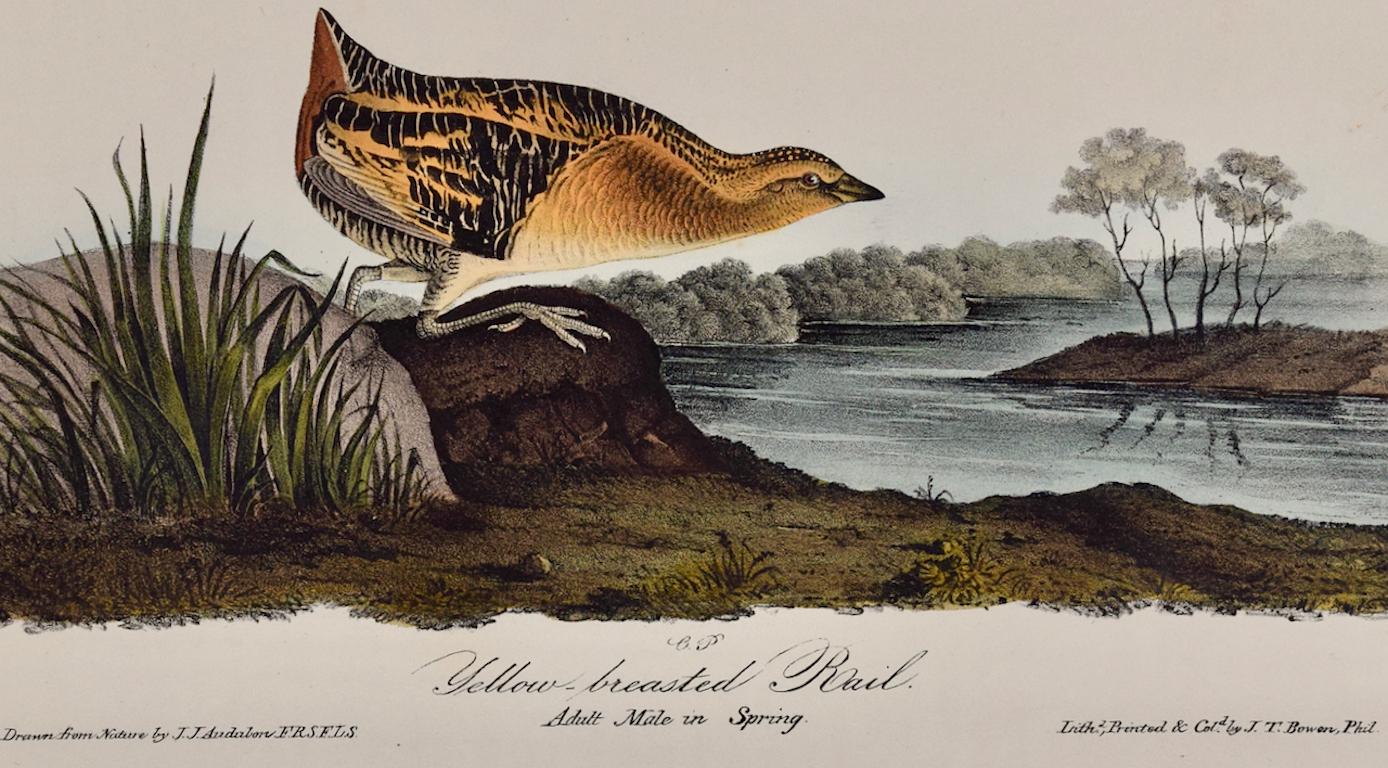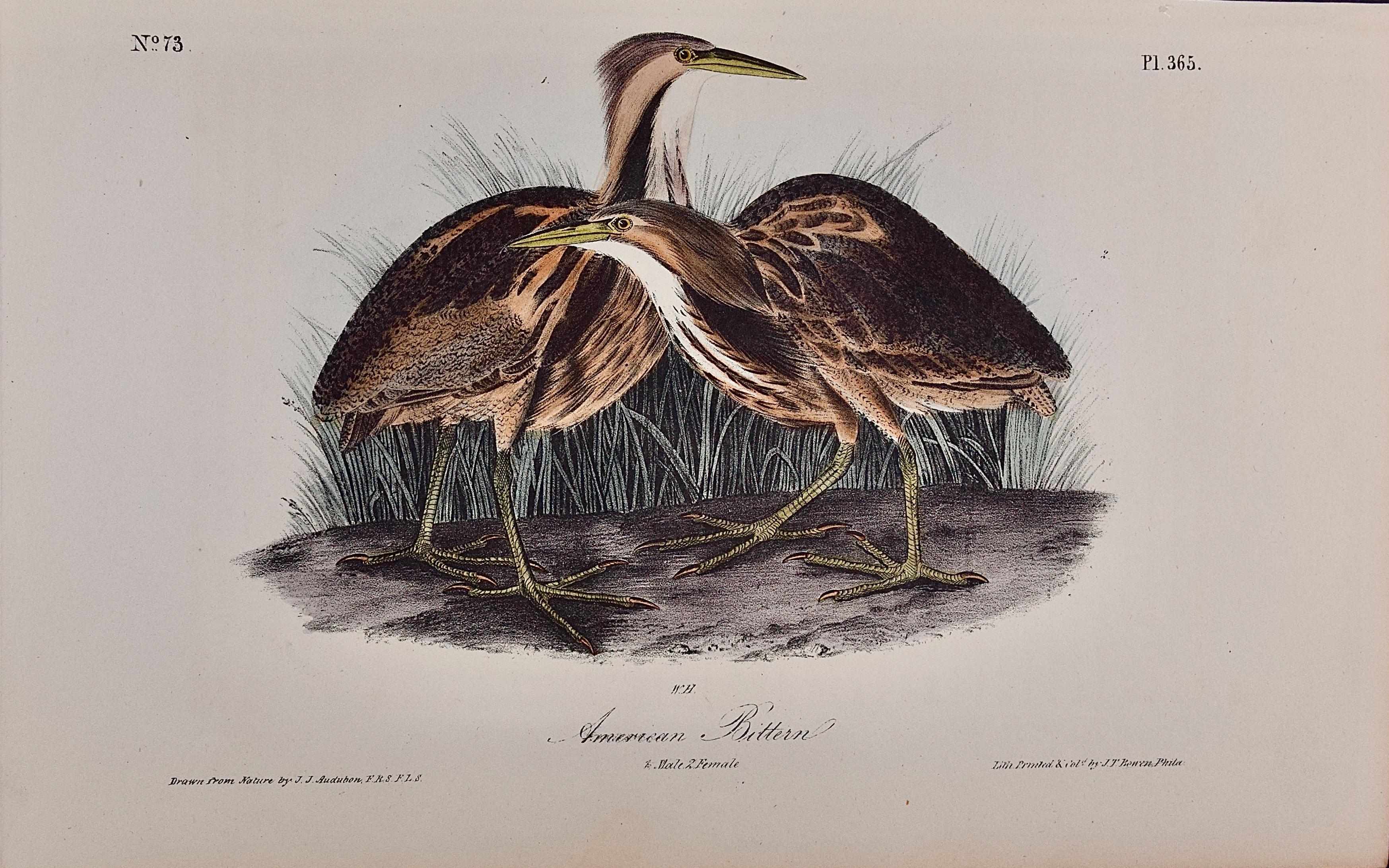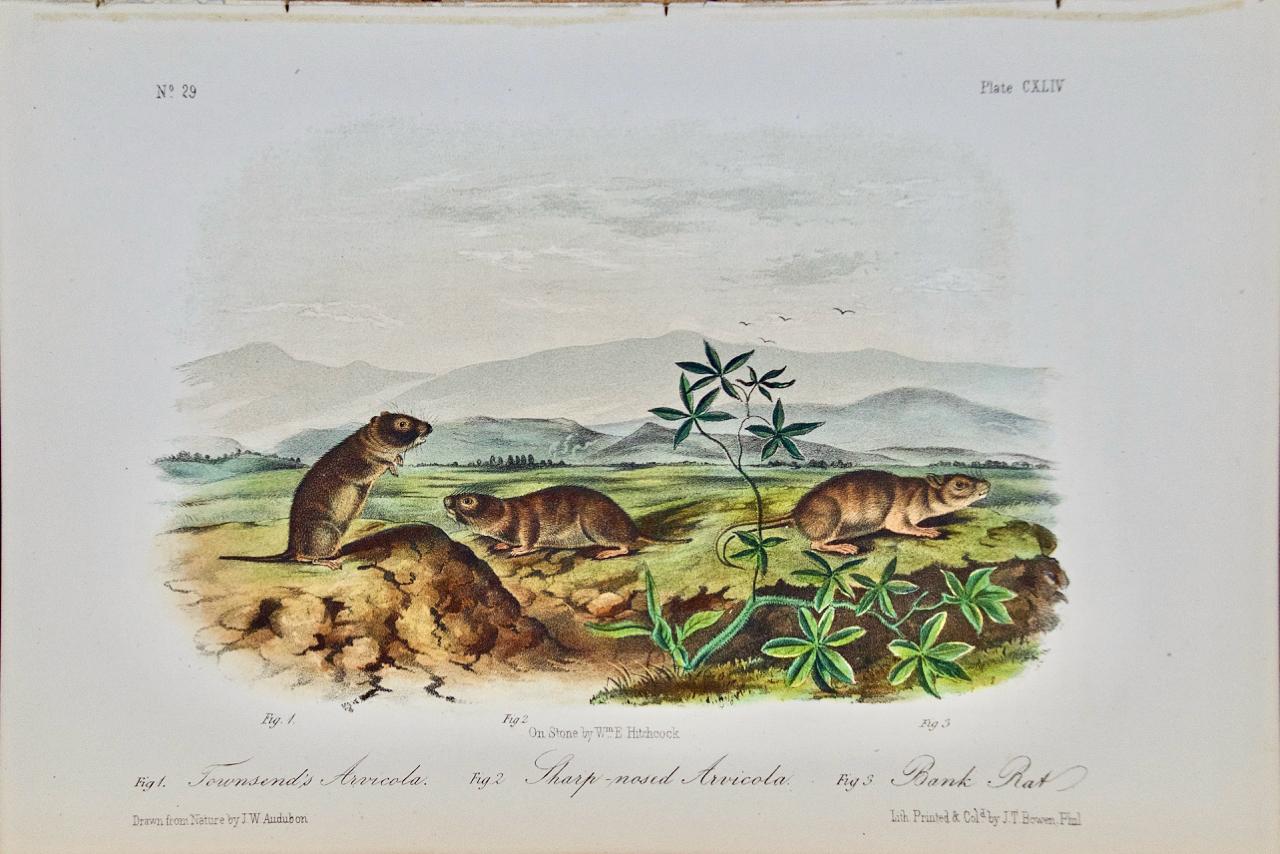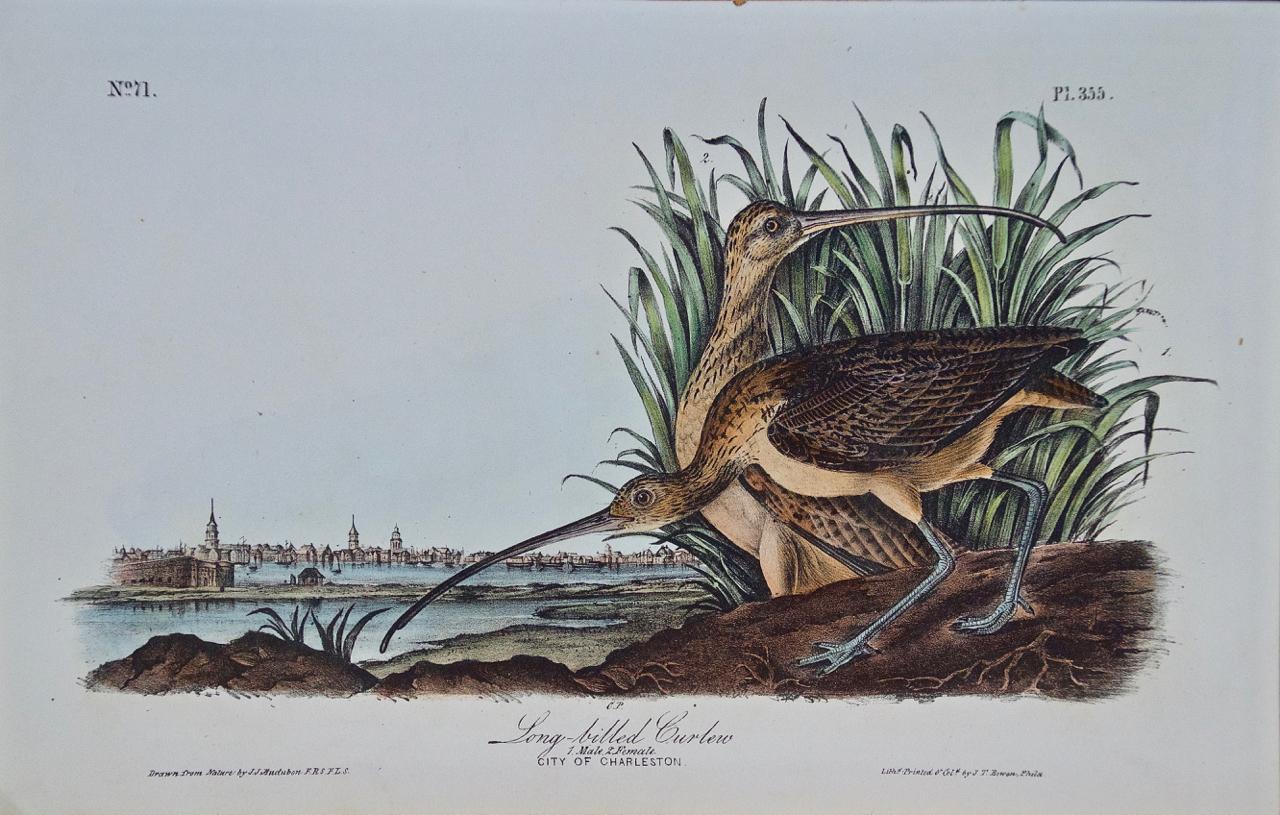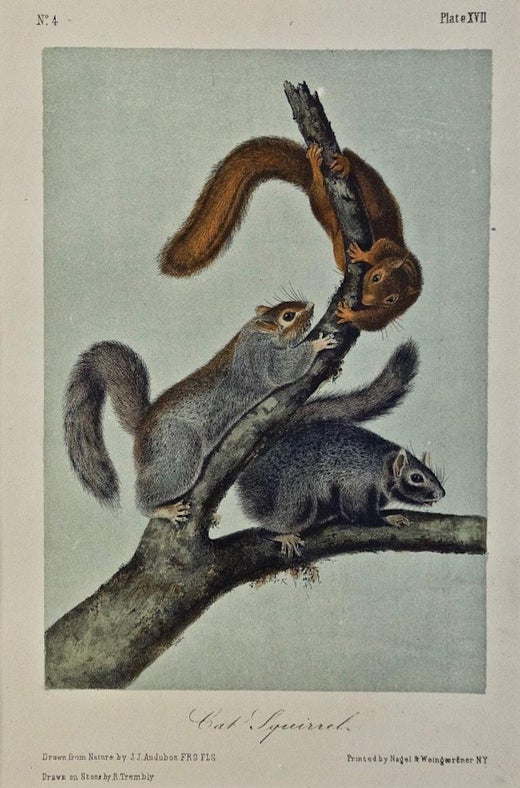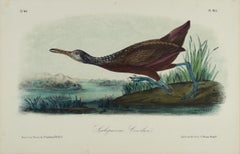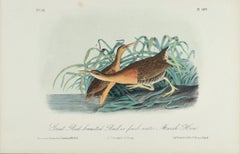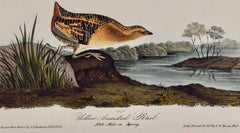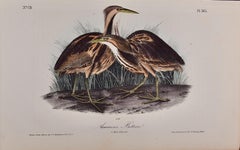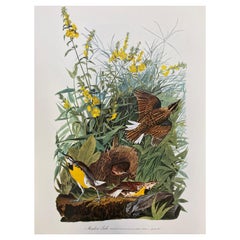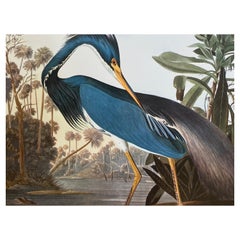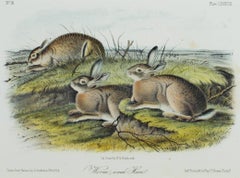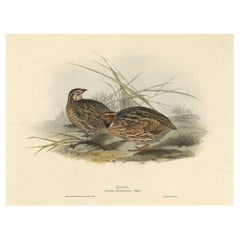Items Similar to Virginian Rail: An Original 19th C. Audubon Hand-colored Bird Lithograph
Want more images or videos?
Request additional images or videos from the seller
1 of 5
John James AudubonVirginian Rail: An Original 19th C. Audubon Hand-colored Bird Lithograph1856
1856
$225
£173.85
€200.99
CA$317.94
A$356.59
CHF 186.74
MX$4,332.94
NOK 2,371.31
SEK 2,248.17
DKK 1,500.28
About the Item
This is an original 19th century John James Audubon hand-colored lithograph entitled "Virginian Rail, 1. Male, 2. Female, 3. Young", No. 63, Plate 311 from Audubon's "Birds of America, lithographed, printed and colored by J. T. Bowen and published in Philadelphia in 1856. It depicts an adult male and female Virginian Rails standing on ground, while a young rail lies on the ground to the right. Foliage augments this beautiful landscape scene.
This original hand-colored Virginian Rail lithograph is in very good condition, other than tiny spots in the margins. The image is in excellent condition. The sheet measures 6.63" high by 10.38" wide. The descriptive text pages 174-179 from Audubon's original 19th century publication are included.
John James Audubon (1785-1851) was a naturalist and artist. He was initially unsuccessful financially prior to the publication of his famous work “The Birds of America”, spending time in debtor’s prison, once stabbing a disgruntled investor in self-defense. However, his obsession with birds and art motivated him to persist in his goal of documenting every bird in America via his watercolor paintings and publishing his works for all to enjoy. Audubon's first illustrations were published in a large elephant folio size. Due to their expense they were purchased in rather small numbers by the wealthy. To reach a larger audience, Audubon, with the help of his sons and J. T. Bowen, published a smaller octavo sized lithograph version, which were much more affordable.
With the success of his bird projects, Audubon then turned his attention to four-legged animals. He explored the Missouri River in 1843 sketching the four-legged animals he encountered in their natural setting. His expedition covered some of the same regions recently explored by Lewis and Clark, traveling from present day Alaska to Mexico. Audubon realized that this was an opportunity to document these animals in the still relatively pristine American wilderness, before man encroached on their environment.
Between 1845 and 1848, Audubon and his sons John Woodhouse Audubon and Victor Gifford Audubon produced a set of elephant folio sized lithographs that were primarily engraved and hand colored by J. T. Bowen in Philadelphia. The publication, which included text descriptions of the animals was published 3 years before Audubon died. As with the birds, this was followed by a three-volume set of 155 octavo-sized plates entitled “The Quadrupeds of North America” completed and published by Audubon’s sons, John, Jr. and Victor.
Audubon prints continue to be popular and a wise investment. The double elephant folio set “The Birds of America” have sold at auction for as much as $8.8 million, and individual plates may sell for six figures. The beautiful octavo sized plates are not as expensive, but becoming more sought after, as the folio bird plates become unattainable to all but the very wealthy.
- Creator:John James Audubon (1785-1851, American, French)
- Creation Year:1856
- Dimensions:Height: 6.63 in (16.85 cm)Width: 10.38 in (26.37 cm)
- Medium:
- Movement & Style:
- Period:
- Framing:Framing Options Available
- Condition:
- Gallery Location:Alamo, CA
- Reference Number:Seller: # 43791stDibs: LU1173213508022
John James Audubon
John James Audubon (April 26, 1785, Les Cayes, Saint-Domingue (later Haiti) – January 27, 1851 (aged 65) Manhattan, New York, U.S.), born Jean-Jacques Audubon, was an American ornithologist, naturalist, and painter. He was notable for his expansive studies to document all types of American birds and for his detailed illustrations that depicted the birds in their natural habitats. His major work, a color-plate book entitled The Birds of America (1827–1839), is considered one of the finest ornithological works ever completed. Audubon identified 25 new species.
About the Seller
5.0
Gold Seller
Premium sellers maintaining a 4.3+ rating and 24-hour response times
Established in 2011
1stDibs seller since 2019
285 sales on 1stDibs
Typical response time: 2 hours
- ShippingRetrieving quote...Shipping from: Alamo, CA
- Return Policy
Authenticity Guarantee
In the unlikely event there’s an issue with an item’s authenticity, contact us within 1 year for a full refund. DetailsMoney-Back Guarantee
If your item is not as described, is damaged in transit, or does not arrive, contact us within 7 days for a full refund. Details24-Hour Cancellation
You have a 24-hour grace period in which to reconsider your purchase, with no questions asked.Vetted Professional Sellers
Our world-class sellers must adhere to strict standards for service and quality, maintaining the integrity of our listings.Price-Match Guarantee
If you find that a seller listed the same item for a lower price elsewhere, we’ll match it.Trusted Global Delivery
Our best-in-class carrier network provides specialized shipping options worldwide, including custom delivery.More From This Seller
View AllScolopaceous Courlan: An Original 19th C. Audubon Hand-colored Bird Lithograph
By John James Audubon
Located in Alamo, CA
This is an original 19th century John James Audubon hand-colored lithograph entitled "Scolopaceous Courlan", No. 63, Plate 312 from Audubon's "Birds of America, lithographed, printed...
Category
Mid-19th Century Naturalistic Animal Prints
Materials
Lithograph
Red-breasted Rail: An Original 19th C. Audubon Hand-colored Bird Lithograph
By John James Audubon
Located in Alamo, CA
This is an original 19th century John James Audubon hand-colored lithograph entitled "Great Red-breasted Rail or Fresh Water Marsh Hen, 1. Male Adult, 2. Young", No. 62, Plate 309 fr...
Category
Mid-19th Century Naturalistic Animal Prints
Materials
Lithograph
Yellow-breasted Rail Bird: Original 19th C. Audubon Hand-colored Lithograph
By John James Audubon
Located in Alamo, CA
This is an original 1st octavo edition John James Audubon hand-colored lithograph entitled "yellow-breasted Rail, Adult Male in Spring", No. 62, Plate 307, from Audubon's "Birds of America". It was lithographed, printed and colored by J. T. Bowen and published in Philadelphia between 1840 and 1841. It depicts an adult male yellow-breasted Rail bird on the left standing on a rock on the bank of a body of water, looking to the right, perhaps at something in the water or on an island on the right with trees. The landscape surrounding the bird is striking.
This original 1st octavo edition hand-colored Audubon lithograph...
Category
Late 19th Century Naturalistic Animal Prints
Materials
Lithograph
American Bittern: An Original 1st Ed. Audubon Hand-colored Bird Lithograph
By John James Audubon
Located in Alamo, CA
This is an original 19th century 1st octavo edition John James Audubon hand-colored lithograph entitled "American Bittern, 1. Male 2. Female", No. 73, Plate 365 from Audubon's "Birds of America, lithographed, printed and colored by J. T. Bowen and published in Philadelphia between 1840-1844. It depicts male and female American Bittern birds standing on the ground, each looking in opposite directions. There is high grass in the background.
This original 1st octavo edition hand-colored Audubon American Bittern lithograph is in excellent condition, other than a few tiny spots, which appear most likely inclusions related to the paper manufacture. The sheet measures 6.5" high by 10.25" wide. The original text pages, 94-98, from Audubon's 19th century publication are included with the lithograph.
John James Audubon (1785-1851) was a naturalist and artist. He was initially unsuccessful financially prior to the publication of his famous work “The Birds of America”, spending time in debtor’s prison, once stabbing a disgruntled investor in self-defense. However, his obsession with birds and art motivated him to persist in his goal of documenting every bird in America via his watercolor paintings and publishing his works for all to enjoy. Audubon's first illustrations were published in a large elephant folio...
Category
Mid-19th Century Naturalistic Animal Prints
Materials
Lithograph
Townsend's Arvicola: Original 19th Cent. Hand-colored Lithograph by Audubon
By John James Audubon
Located in Alamo, CA
This is an original John James Audubon hand-colored lithograph entitled "Townsend's Arvicola; Sharp-nosed Arvicola; Bank Rat", No. 31, Plate CXLIV from John James Audubon's Quadruped...
Category
Mid-19th Century Naturalistic Animal Prints
Materials
Lithograph
Long-billed Curlew Bird: Original 1st Edition Audubon Hand Colored Lithograph
By John James Audubon
Located in Alamo, CA
An original rare and extremely collectible first edition John James Audubon hand colored lithograph entitled "Long-billed Curlew", No. 71, Plate 355, from Audubon's "Birds of America. It was lithographed, printed and colored by J. T. Bowen and published in Philadelphia between 1840-1844. It depicts a male and a female Long-billed Curlew standing on a grassy mound with water and the city of Charleston...
Category
Mid-18th Century Naturalistic Animal Prints
Materials
Lithograph
You May Also Like
Large Classical Bird Color Print after John James Audubon, Meadow Lark
Located in Cirencester, Gloucestershire
Classical Bird print,
after John James Audubon,
printed by Harry N. Abrams, Publishers, New York
unframed, 17 x 14 inches color print on paper
condition: very good
provenance: from...
Category
20th Century Victorian Animal Prints
Materials
Acrylic
Large Classical Bird Color Print After John James Audubon, Louisiana Heron
Located in Cirencester, Gloucestershire
Classical Bird print,
after John James Audubon,
printed by Harry N. Abrams, Publishers, New York
unframed, 17 x 14 inches color print on paper
Condition: very good
Provenance: from...
Category
20th Century Victorian Animal Prints
Materials
Acrylic
19th century color lithograph hare landscape grass animal print wildlife
By John James Audubon
Located in Milwaukee, WI
"Worm-Wood Hare" is an original color lithograph by John James Audubon. It depicts three brown rabbits in a landscape. No. 18, Plate LXXXVIII, On Stone by W.E. Hitchcock.
6" x 8" ar...
Category
1840s Other Art Style Animal Prints
Materials
Lithograph
Beautiful Antique Hand-Colored Bird Print of the Common Quail by Gould, 1832
Located in Langweer, NL
Antique bird print titled 'Quail (Coturnix dactylisonans).'
This plate shows the common quail (Coturnix coturnix). Expertly hand-coloured.John Gould: "Birds of Europe". 1832–1837...
Category
Antique 1830s Prints
Materials
Paper
$640 Sale Price
50% Off
Large Classical Bird Color Print After John James Audubon, Wild Turkey
Located in Cirencester, Gloucestershire
Classical Bird print,
after John James Audubon,
printed by Harry N. Abrams, Publishers, New York
unframed, 17 x 14 inches color print on paper
condition: very good
provenance: from...
Category
20th Century Victorian Animal Prints
Materials
Acrylic
Large Classical Bird Color Print after John James Audubon, Baltimore Oriole
Located in Cirencester, Gloucestershire
Classical Bird print,
after John James Audubon,
printed by Harry N. Abrams, Publishers, New York
unframed, 17 x 14 inches color print on paper
condition: very good
provenance: from...
Category
20th Century Victorian Animal Prints
Materials
Acrylic
More Ways To Browse
Virginia 19th Century
Antique Hand Rails
Lebadang Horses
Banksy Note
Bristol Vintage Poster
Duck Lithograph
Family Dog Poster
Francois Turpin
Mychael Barratt
Vintage Derby Poster
Antique Botanical Books
Gould Hummingbird Print
Harry Bunce
Michael Watson
Warhol Cat
John Gould Toucans
Cajun Art
Gould Richter Hummingbirds
